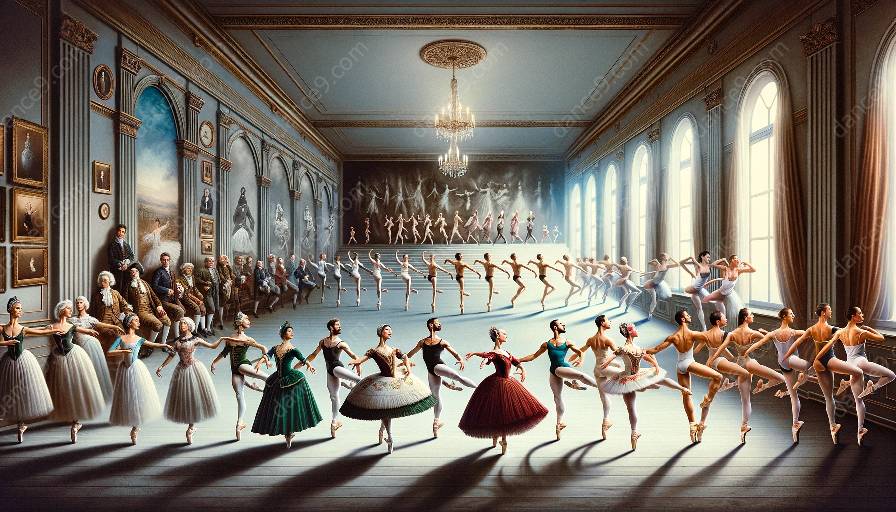Ballet techniques have evolved significantly over the centuries, shaping the art form and influencing dance performance through history. This topic cluster will explore the development, impact, and integration of ballet techniques within the broader context of ballet history, theory, and performing arts.
Ballet History: Rooted in Tradition
Ballet traces its origins back to the Italian Renaissance courts of the 15th century, where spectacular performances combining music, dance, and pageantry were staged for the entertainment of nobles and royals. The early ballets were characterized by elaborate costumes, set designs, and baroque music, and the movement vocabulary was considerably limited compared to modern ballet techniques. It was during the 19th century that ballet underwent a significant transformation, particularly with the influence of Romanticism, leading to the development of technical advancements and codified steps that laid the foundation for modern ballet techniques.
Development of Ballet Technique
The evolution of ballet techniques can be attributed to various influential figures, including choreographers, dancers, and teachers, who have contributed to the refinement and expansion of movement vocabulary in ballet. One of the most notable developments was the establishment of the five basic positions of the feet and arms by dance master Pierre Beauchamp during the 17th century, which served as the fundamental building blocks of ballet technique. Additionally, the pioneering work of choreographers such as Marius Petipa in the late 19th century further advanced the technical and artistic capabilities of ballet, introducing complex footwork, pointe work, and the use of ballet mime to enhance storytelling in dance.
Impact on Dance Performance
Ballet techniques have had a profound impact on the art of dance performance, influencing not only classical ballet but also contemporary and modern dance forms. The technical rigor, precision, and grace associated with ballet techniques have set a standard for dancers across different styles and genres, emphasizing the significance of alignment, turnout, épaulement, and musicality in movement. Moreover, the evolution of ballet techniques has contributed to the athleticism and virtuosity displayed by dancers, pushing the boundaries of physicality and expression in dance performance.
Ballet Theory: Theoretical Framework of Movement
Ballet theory encompasses the principles, aesthetics, and pedagogy underlying ballet techniques, providing a theoretical framework for understanding the mechanics and artistry of dance. It involves the study of anatomy, kinesiology, and biomechanics to optimize movement efficiency, alignment, and injury prevention. Additionally, ballet theory explores the historical context of ballet, examining the socio-cultural influences and thematic motifs embedded in ballet repertoire, which informs the interpretation and performance of ballet techniques.
Integration into Performing Arts
The integration of ballet techniques into the performing arts extends beyond the classical ballet stage, permeating other artistic disciplines such as theater, film, and interdisciplinary collaborations. Ballet techniques can be seen in contemporary dance productions, fusion performances, and multimedia works, demonstrating their versatility and adaptability in diverse artistic contexts. Furthermore, the incorporation of ballet techniques into the training of performing artists, including actors and musicians, has enriched interdisciplinary practices, enhancing physical expression, stage presence, and artistic interpretation.
Conclusion: Evolving Artistry
The evolution of ballet techniques reflects an ongoing pursuit of excellence, innovation, and artistic expression within the realm of dance. As ballet continues to evolve and adapt to changing cultural landscapes, the exploration and preservation of ballet techniques remain integral to the legacy of this timeless art form.





























